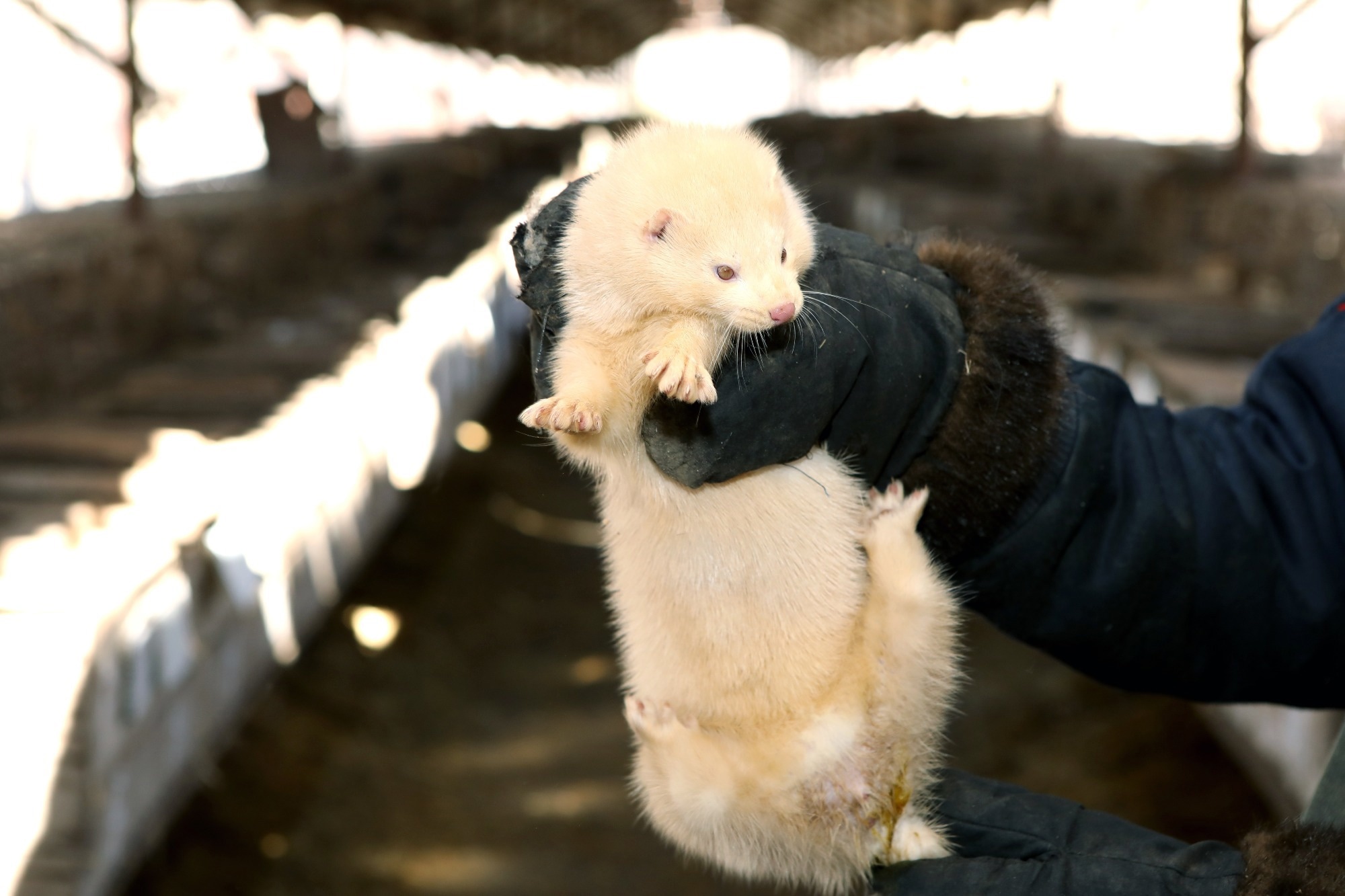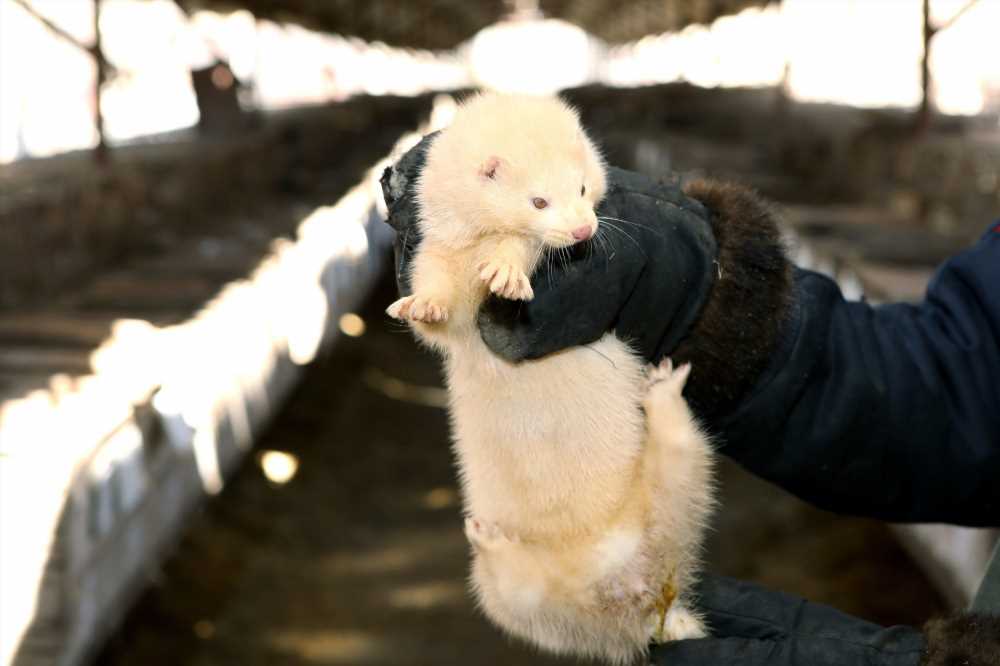Highly pathogenic avian influenza (HPAI) A(H5N1) is a strain of the avian influenza virus that primarily affects birds, particularly poultry. HPAI A(H5N1) is a highly contagious and deadly virus that can cause severe illness and death in birds, including chickens, ducks, geese, and turkeys. It has made a resurgence after many months of extremely low prevalence during the coronavirus disease 2019 pandemic (COVID-19). A recent report in the journal Eurosurveillance describes an outbreak from a mink farm in Spain caused by clade 2.3.4.4b.
 Rapid communication: Highly pathogenic avian influenza A(H5N1) virus infection in farmed minks, Spain, October 2022. Image Credit: Cergios / Shutterstock
Rapid communication: Highly pathogenic avian influenza A(H5N1) virus infection in farmed minks, Spain, October 2022. Image Credit: Cergios / Shutterstock
The outbreak
The mink farm described here is in Galicia, northwest Spain. The initial signs of the outbreak came with a sudden rise in the number of deaths in proportion to the total number of minks, with the mortality rate increasing to 0.77% from the expected rate of 0.2-0.3%. This occurred in early October 2022 and led to the collection of oropharyngeal swabs from two sick animals.
These were tested at the Central Veterinary Laboratory (LCV) of Algete (Ministry of Agriculture, Fisheries and Food (MAPA)). While the mink samples showed no trace of the severe acute respiratory syndrome coronavirus 2 (SARS-CoV-2) by the polymerase chain reaction (PCR) test, they were positive for the HPAI virus. This was supported by the identification of pneumonia in the affected animals, which led to bleeding into the lungs.
The sick animals showed signs such as anorexia, dribbling, drooling of saliva, low energy, bleeding from the snout, and tremors or loss of balance and coordination, indicating the involvement of the nervous system.
The deaths increased week by week, reaching a peak by the third week of October when over 4% of animals were dying. Initially, mortality was observed among animals living near the manure storage barn. These barns displayed several hotspots of mortality, i.e., clusters of 2-4 pens with 100% mortality within a week or two.
The deaths spread to adjacent barns until they were occurring in every place there were minks. As more and more samples were taken from those barns where the most significant number of animals appeared to be dying, high levels of H5N1 were detected, as assessed by a low cycle threshold (Ct) in rectal, oropharyngeal, or lung samples.
In the second week of October that year, the animal health services census showed over 51,000 minks in wire cages within roofed but not completely walled-in barns. The animals were fed raw fish, poultry by-products, blood meals, and cereals. The poultry waste came from farms and abattoirs in Galicia.
How was it detected?
Interestingly, no outbreaks of avian flu among farmed birds were known to have occurred so far in this region, as late as January 10, 2023. However, in the weeks before the mink outbreak, multiple wild birds were found to be sick or dead from HPAI infection, including a few seagulls and several gannets. This was a red flag for public health experts to suspect that the mink deaths were related to this virus.
Omics eBook

Along with PCR testing to rule out SARS-CoV-2 infection, this led to specific testing for HPAI, which was confirmed to be the culprit.
The virus
Genomic testing in the European Reference Laboratory revealed the strains belonged to clade 2.3.4.4b. This has been noted to infect wild birds, especially herring gulls, in Belgium, the Netherlands, and France, both in the past and for some weeks before the Spanish outbreak. However, it has not been reported in Spain prior to this outbreak.
Clade 2.3.4.4b appears to be the result of reassortment events of several genes of H5N1 with the gull-adapted H13 subtype. The strains genotyped from the minks differed at 8-9 amino acids from the nearest genetically related H5N1 variants. Especially remarkable is the alanine substitution in the PB2 gene that causes increased viral polymerase activity following its infection of mammalian cells.
So far, this substitution has been observed just once in a European polecat from the Netherlands, in March 2022. The other mutations in this clade have not yet been found anywhere else, and studies are awaited to unravel their role in the virus lifecycle.
Averting further spread
Following the virus's identification, mink culling began on October 18, 2022, clearing all animals on the farm's premises by November 17 of that year. The farm was cleaned up with the destruction of all the waste and carcasses. Most of the farm's 12 workers took part in the culling, having already been in contact with the animals prior to this step. They were tested on the 13th and 14th of October by nasopharyngeal swab while asymptomatic, and all tested negative for the virus.
Out of caution, they were required to stay away from people for ten days from the last contact with the farm or the mink. They also self-monitored for flu-like symptoms. Only one showed symptoms on November 2 but tested negative for the virus.
Notably, workers on mink farms have been required to wear face masks since April 2020, when farmed mink were found to be infected with SARS-CoV-2. Later, more protective gear was added, along with handwashing several times a day, while work clothes were laundered and showers were taken as frequently at the farm. The workers also spent less time off-duty at the farms, reducing their period of contact.
What are the implications?
Mink appears to allow infection by influenza viruses, both human and avian. "This species could serve as a potential mixing vessel for the interspecies transmission among birds, mammals and human." With H5N1 being reported in birds worldwide, care must be taken to prevent mink infection on farms like this one. Importantly, though rare, human infection with avian flu has a very high mortality rate of 50-60%.
Earlier concerns were raised as mink were found to be susceptible to SARS-CoV-2, with transmission occurring bidirectionally between humans and mink. Such events could cause similar pathogens to spread from or to wild animals through farmed mink, posing a threat to human health.
This underlines the need to "strengthen the culture of biosafety and biosecurity in this farming system and promote the implementation of ad hoc surveillance programs for influenza A viruses and other zoonotic pathogens at a global level."
- Aguero, M. et al. (2023). Highly pathogenic avian influenza A(H5N1) virus infection in farmed minks, Spain, October 2022. Eurosurveillance. https://doi.org/10.2807/1560-7917.ES.2023.28.3.2300001, https://www.eurosurveillance.org/content/10.2807/1560-7917.ES.2023.28.3.2300001
Posted in: Medical Science News | Medical Research News | Disease/Infection News
Tags: Agriculture, Alanine, Anorexia, Avian Influenza, Biosecurity, Bleeding, Blood, Coronavirus, covid-19, CT, Fish, Flu, Food, Gene, Genes, Genomic, H5N1, Influenza, Laboratory, Lungs, Mammalian Cells, Mortality, Nasopharyngeal, Nervous System, Pandemic, Pneumonia, Polymerase, Polymerase Chain Reaction, Public Health, Respiratory, SARS, SARS-CoV-2, Severe Acute Respiratory, Severe Acute Respiratory Syndrome, Syndrome, Veterinary, Virus

Written by
Dr. Liji Thomas
Dr. Liji Thomas is an OB-GYN, who graduated from the Government Medical College, University of Calicut, Kerala, in 2001. Liji practiced as a full-time consultant in obstetrics/gynecology in a private hospital for a few years following her graduation. She has counseled hundreds of patients facing issues from pregnancy-related problems and infertility, and has been in charge of over 2,000 deliveries, striving always to achieve a normal delivery rather than operative.
Source: Read Full Article
